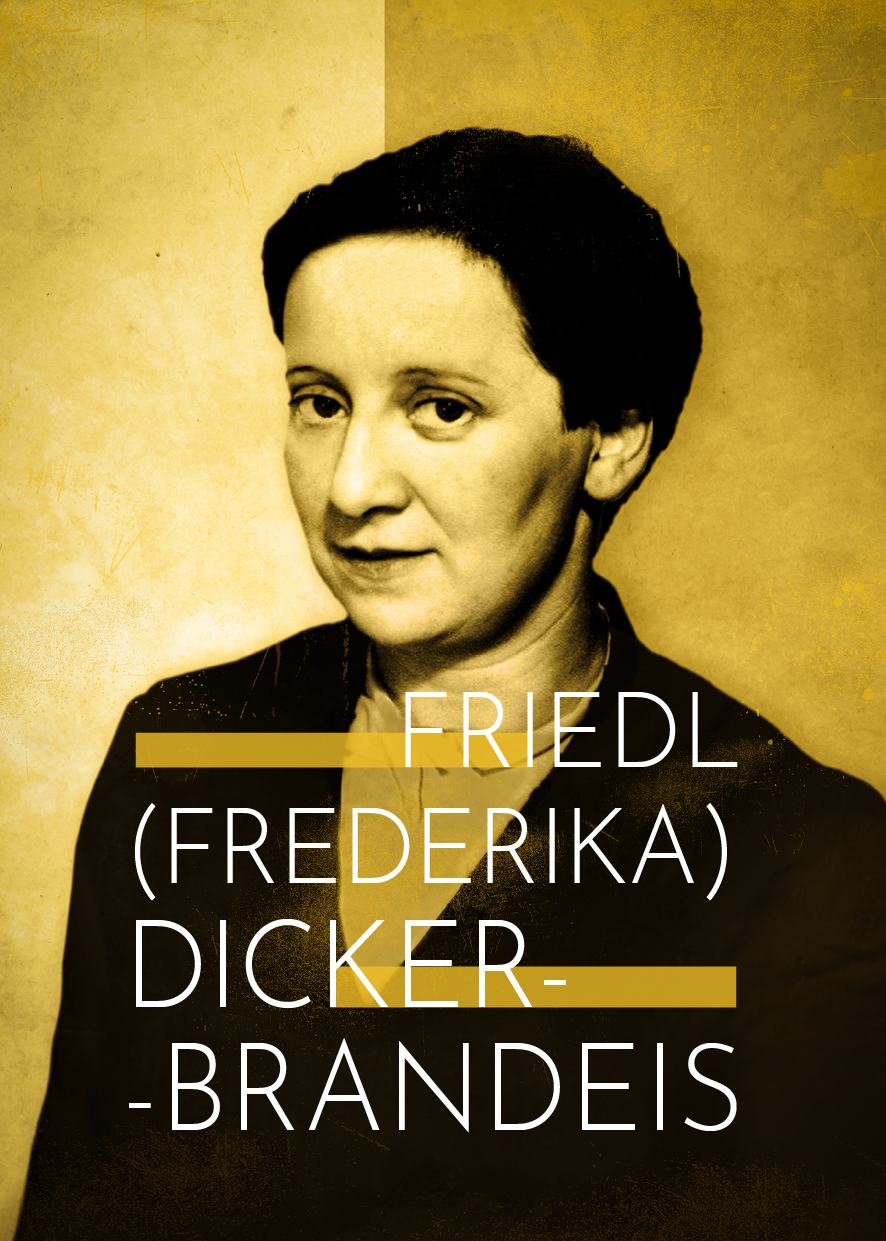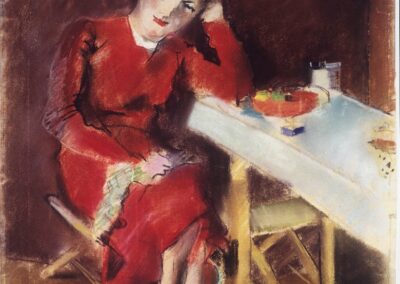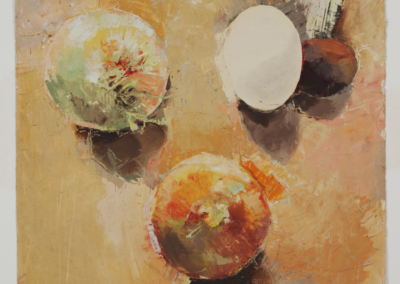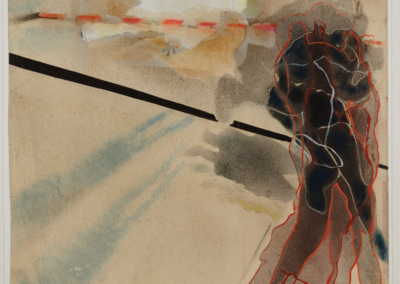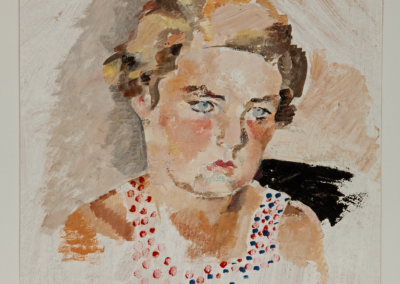30 VII 1898, Vienna — 9 X 1944, KL Auschwitz-Birkenau
Biography
A member of the Bauhaus movement, Friedl Dicker-Brandeis was a painter, architect, and interior designer interned in the Terezín Ghetto (Theresienstadt). She organized art classes for the children, which served as a form of emotional therapy.
Friedl (Frederika) Dicker-Brandeis was born in 1898 in Vienna to a poor Jewish family. Her father was a shopkeeper’s assistant and her mother, Karolina, died in 1902 while she was very young, leaving a lifelong imprint. Her later life was strongly affected by her mother’s absence. She studied photography and began her professional career working in a puppet theatre. She later enrolled in the School of Arts and Crafts in Vienna (later the School of Applied Arts) where she attended drawing lessons taught by Franz Čižek. Johannes Itten, one of the founders of the Bauhaus movement, painter and educator was one of her teachers. In 1936, Friedl married Pavel Brandeis, a trained carpenter.
In 1942, Friedl and her husband were transported to the Terezín Ghetto (Theresienstadt), where she helped organize clandestine educational activities for children, taught art, and gave lectures. She saw art as a way of expressing difficult feelings and of understanding children’s emotions. After the war, the children’s drawings from the workshops were discovered and became known worldwide. Her methods laid the groundwork for the development of art therapy.
In September 1944, Friedl’s husband was transported to Auschwitz-Birkenau, and she volunteered for the next transport to join him. Her husband survived the war, but Friedl Dicker-Brandeis was killed in 1944.
The owner of visual materials is the Jewish Museum in Prague.
A member of the Bauhaus movement, Friedl Dicker-Brandeis was a painter, architect, and interior designer interned in the Terezín Ghetto (Theresienstadt). She organized art classes for the children, which served as a form of emotional therapy.
Friedl (Frederika) Dicker-Brandeis was born in 1898 in Vienna to a poor Jewish family. Her father was a shopkeeper’s assistant and her mother, Karolina, died in 1902 while she was very young, leaving a lifelong imprint. Her later life was strongly affected by her mother’s absence. She studied photography and began her professional career working in a puppet theatre. She later enrolled in the School of Arts and Crafts in Vienna (later the School of Applied Arts) where she attended drawing lessons taught by Franz Čižek. Johannes Itten, one of the founders of the Bauhaus movement, painter and educator was one of her teachers. In 1936, Friedl married Pavel Brandeis, a trained carpenter.
In 1942, Friedl and her husband were transported to the Terezín Ghetto (Theresienstadt), where she helped organize clandestine educational activities for children, taught art, and gave lectures. She saw art as a way of expressing difficult feelings and of understanding children’s emotions. After the war, the children’s drawings from the workshops were discovered and became known worldwide. Her methods laid the groundwork for the development of art therapy.
In September 1944, Friedl’s husband was transported to Auschwitz-Birkenau, and she volunteered for the next transport to join him. Her husband survived the war, but Friedl Dicker-Brandeis was killed in 1944.

